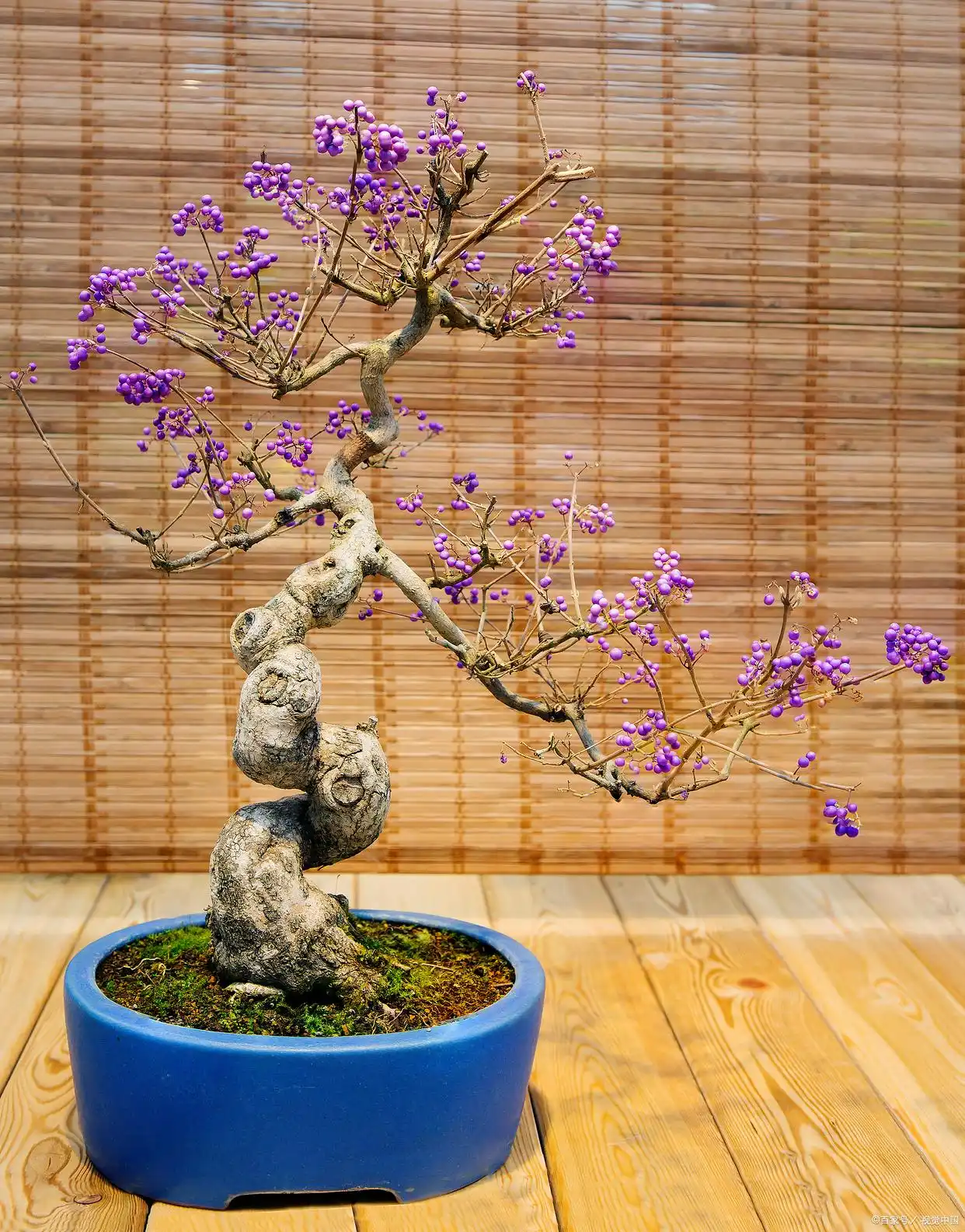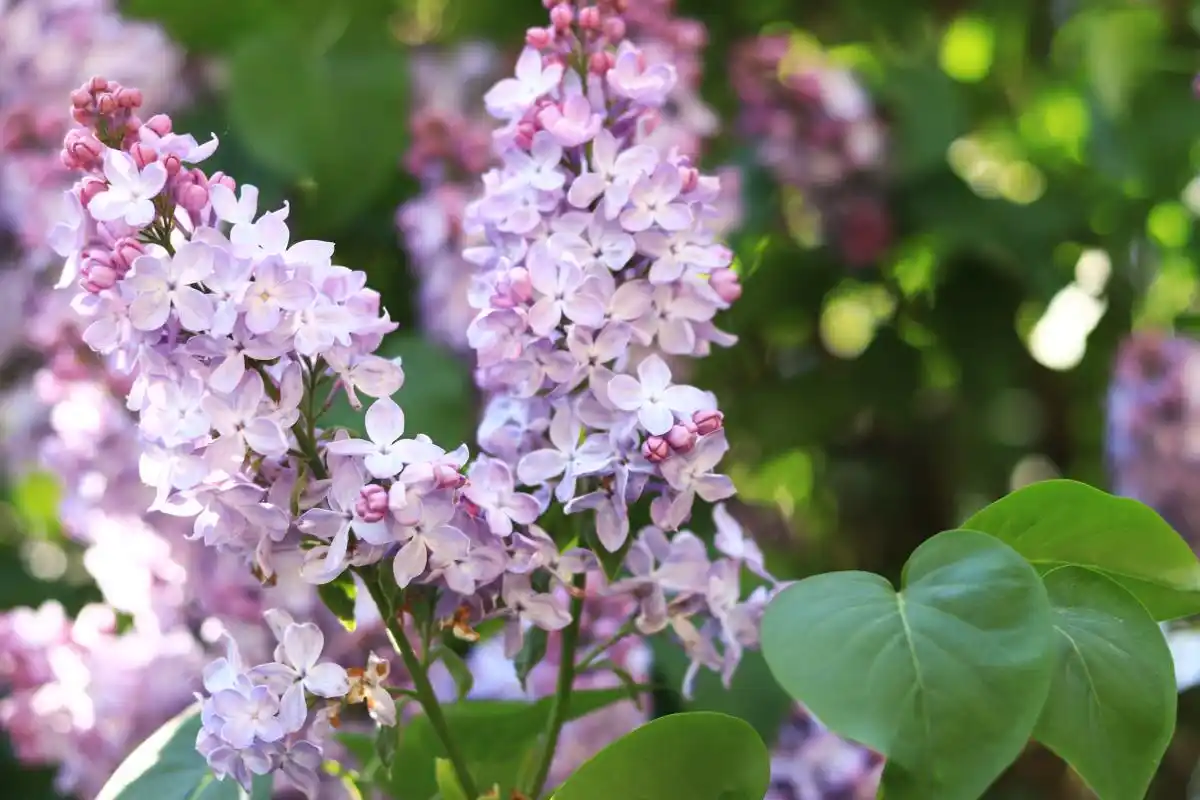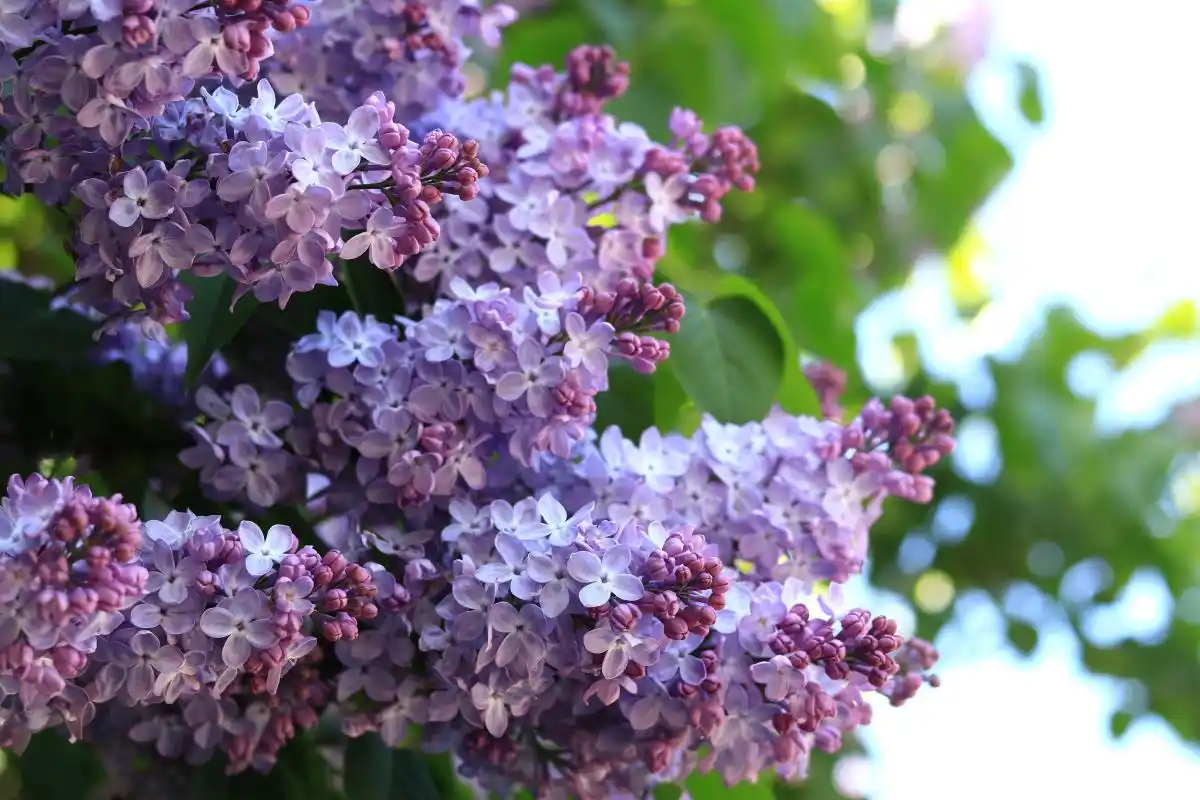Lilac, a common ornamental flower, attracts countless flower lovers with its unique charm. Whenever spring comes, lilacs bloom abundantly, with a gentle breeze and fragrant flowers that are intoxicating. However, to successfully maintain a potted clove plant at home, understanding its growth habits and breeding methods is crucial. This article will focus on introducing the growth habits and potted cultivation techniques of lilacs, helping you easily master the maintenance of lilacs.

01
1. Growth habits of lilac flowers
1.1 ◇ Environmental and soil requirements
Lilac flowers prefer warm, humid, and sunny environments. Although they are slightly tolerant to shade, lilac flowers grown in dark or semi shaded areas appear weak and bloom relatively infrequently.
. This plant has a certain degree of cold resistance and exhibits strong drought tolerance. In terms of soil, lilacs are not picky, they can tolerate barrenness and prefer fertile and well drained soil. It is particularly important to note that waterlogging in low-lying areas may lead to diseases and even whole plant death.1.2 ◇ The best transplantation time and suitable growth area
 The best transplantation time is before the sprouting of fallen leaves, and the bare roots should be transplanted to a sunny place with fertile soil, good drainage, and sufficient sunlight.. Lilac flowers are mainly distributed on the slopes and understory of subtropical subalpines, warm temperate to temperate forests, as well as sunny shrubs in cold temperate zones.
The best transplantation time is before the sprouting of fallen leaves, and the bare roots should be transplanted to a sunny place with fertile soil, good drainage, and sufficient sunlight.. Lilac flowers are mainly distributed on the slopes and understory of subtropical subalpines, warm temperate to temperate forests, as well as sunny shrubs in cold temperate zones. 02
2. Cultivation techniques for lilacs
2.1 ◇ Soil selection and transplantation timing
When planting lilacs, the primary task is to choose suitable soil.
. It prefers fertile and well drained soil, and can also grow in barren environments. However, waterlogging in low-lying areas may pose a threat to it and even lead to the death of the entire plant. The best time to prepare for transplantation is before the sprouting of leaves.2.2 ◇ Pot selection and planting points
Due to the tall and robust roots of lilac plants, it is more suitable to choose medium deep pottery pots, whether they are square or round pots.
. In terms of pot color selection, pots with light blue or light yellow tones can create a good contrast and contrast with the purple and white flowers of lilacs. During February and March, select robust lilac seedlings for potting and planting. Before planting, it is necessary to make appropriate adjustments to the root system and retain more fibrous roots so that the root system can stretch freely in the pot. Afterwards, evenly compact the soil to ensure a tight connection between the soil and the roots. Finally, cover a layer of soil so that the soil surface is about 2-3 centimeters below the mouth of the pot, and water thoroughly to keep the soil thoroughly moist. 2.3 Watering and Temperature Management Lilac flowers have strong vitality and are relatively easy to maintain.. In the daily maintenance process, as long as weeds are removed in a timely manner, and appropriate watering is done during drought, while avoiding water accumulation, it can grow vigorously. Lilac flowers are suitable for growing in warm and humid environments, and their native climate belongs to the equatorial rainforest climate. This plant has a certain degree of cold resistance and can survive at lower temperatures. However, the optimal growth temperature range for lilacs is 15-20 ℃, and within this temperature range, their growth rate is the fastest. When the temperature drops below 3 ℃, lilac flowers will stop growing. If the temperature continues to decrease, it may cause plant frostbite or even death. Therefore, when caring for lilacs, it is important to maintain a suitable growth temperature. Lilac flowers prefer sufficient sunlight. Although they can also grow in slightly shaded environments, to ensure their health and growth, they should be placed in a sunny place during daily maintenance.
Lilac flowers have strong vitality and are relatively easy to maintain.. In the daily maintenance process, as long as weeds are removed in a timely manner, and appropriate watering is done during drought, while avoiding water accumulation, it can grow vigorously. Lilac flowers are suitable for growing in warm and humid environments, and their native climate belongs to the equatorial rainforest climate. This plant has a certain degree of cold resistance and can survive at lower temperatures. However, the optimal growth temperature range for lilacs is 15-20 ℃, and within this temperature range, their growth rate is the fastest. When the temperature drops below 3 ℃, lilac flowers will stop growing. If the temperature continues to decrease, it may cause plant frostbite or even death. Therefore, when caring for lilacs, it is important to maintain a suitable growth temperature. Lilac flowers prefer sufficient sunlight. Although they can also grow in slightly shaded environments, to ensure their health and growth, they should be placed in a sunny place during daily maintenance. 2.4 ◇ Fertilization and pot pruning
The blooming of lilacs cannot be separated from reasonable fertilization.
. Although cloves do not prefer heavy fertilizers, proper fertilization is essential. To prevent excessive growth of branches from affecting flowering, we usually recommend applying mature compost once a year or the following year before winter arrives. Lilac flowers need to be repotted regularly, usually every 2-3 years. When changing pots, remove the cloves, carefully prune the roots, remove old and long roots, and then replace with new culture soil to provide a good environment for the healthy development of the roots, ensuring lush leaves and blooming flowers. In addition, pruning cloves is also essential. Before the sprouting of lilacs in mid March each year, pruning and shaping should be carried out, mainly to remove branches that are too dense, thin, and have pests and diseases. At the same time, vigorous growing branches should be pruned to promote ventilation and reduce nutrient competition. After the flowers have withered, if there is no need to keep seeds, it is recommended to cut off the remaining flowers and the two buds below them together. This will help reduce nutrient consumption, promote the germination of new branches, and facilitate the formation of flower buds. After falling leaves, a comprehensive pruning can be carried out to maintain the integrity and beauty of the tree crown, preparing for the growth and flowering of the following year. 2.5 ◇ Disease and pest control
2.5 ◇ Disease and pest controlLilac flowers may face various threats during their growth process, such as wilting, leaf blight, and wilt caused by bacteria or fungi.
. In addition, viruses may also cause symptoms in lilacs. These diseases are usually more likely to occur in high temperature and high humidity environments during summer. At the same time, lilac flowers may also be affected by pests such as caterpillars, moths, leaf moths, as well as wasps and scale insects, so appropriate control measures need to be taken.lilac bonsai tree is a very beautiful bonsai. Its flowers have a strong aroma and rich colors, making it very suitable for viewing in living rooms, balconies, and other places.
. So, how to plant lilac bonsai tree? Next, let's introduce in detail the planting method of lilac bonsai tree.First, choose flower seedlings
 Before planting lilac bonsai tree, we need to first choose suitable flower seedlings.. Generally speaking, when choosing flower seedlings, the following points should be noted:
Before planting lilac bonsai tree, we need to first choose suitable flower seedlings.. Generally speaking, when choosing flower seedlings, the following points should be noted:1. Choose healthy flower seedlings. Healthy flower seedlings have lush green leaves and are free from pests, and their flower buds are also full of vitality.
2. Choose flower seedlings with full flower buds. Seedlings with full flower buds usually bloom more beautiful flowers.
3. Choose the flower seedlings that suit you. Different varieties of lilacs come in different colors and shapes, and we can choose according to our preferences when making a purchase.
2. Soil Preparation
After selecting the flower seedlings, we need to prepare soil suitable for the growth of lilac bonsai tree.
. Lilac prefers soft, fertile, and well drained soil, and can use the following soils:1. Peat soil: Peat soil is a soft, breathable, and well drained soil that is very suitable for the growth of lilac bonsai tree.
2. Rotten leaf soil: Rotten leaf soil is a soil rich in organic matter, which can provide sufficient nutrients and water, suitable for the growth of lilac bonsai tree.
. 3. Perlite: Perlite is a porous material that can increase soil aeration and drainage, making it very suitable for the growth of lilac bonsai tree.III. Planting lilac bonsai tree
1. Choose a suitable pot.
. The size of the pot should be selected according to the size of the seedlings. Generally speaking, the size of the seedlings and the pot should maintain a certain proportion, and the pot should have drainage holes.2. Add an appropriate amount of soil. Put the selected soil into a basin, fill it flat and compact it.
 3. Place the flower seedlings in a basin.. Place the flower seedlings into the pot, place the roots in the center of the soil, then fill the soil to the mouth of the pot and gently compact it.
3. Place the flower seedlings in a basin.. Place the flower seedlings into the pot, place the roots in the center of the soil, then fill the soil to the mouth of the pot and gently compact it. 4. Watering. Water thoroughly and keep the soil moist, but not too wet.
5. Place it in a suitable location. Lilacs prefer environments with ample sunlight, but they should not be exposed to direct sunlight. They can be placed on balconies or in sunny indoor areas.
4. Maintenance of lilac bonsai tree
1. Watering. lilac bonsai tree needs to keep the soil moist, but not too moist. Generally, watering once a week is sufficient.
2. Fertilization. lilac bonsai tree requires regular fertilization, and flower specific fertilizers can be chosen to be applied every month.
3. Trimming. lilac bonsai tree needs regular pruning, which can maintain the beautiful shape of the flowers and trees and promote their growth.
4. Insect prevention. lilac bonsai tree is susceptible to pest infestations and can be treated with insecticides. The above is the planting method of lilac bonsai tree, hoping to be helpful to everyone. In the process of planting lilac bonsai tree, we need to pay attention to keeping the soil moist, regularly fertilizing, pruning, and pest control, so as to ensure the healthy growth and beautiful flowers of lilac bonsai tree.